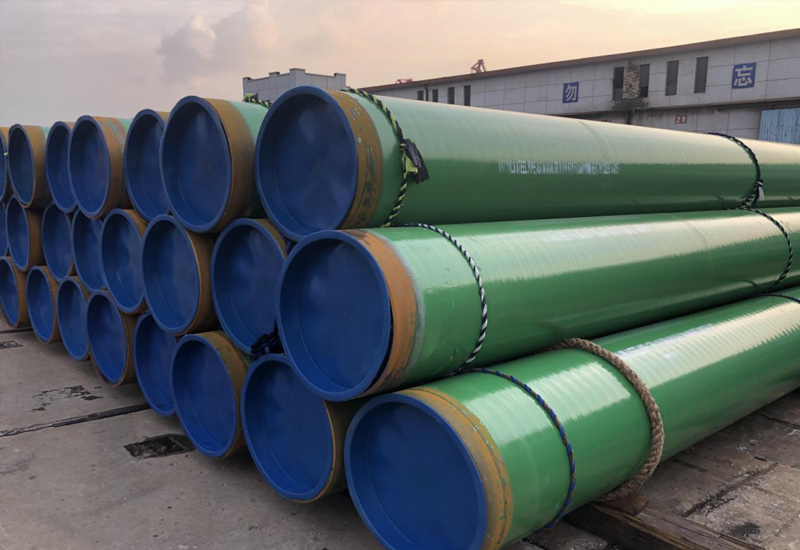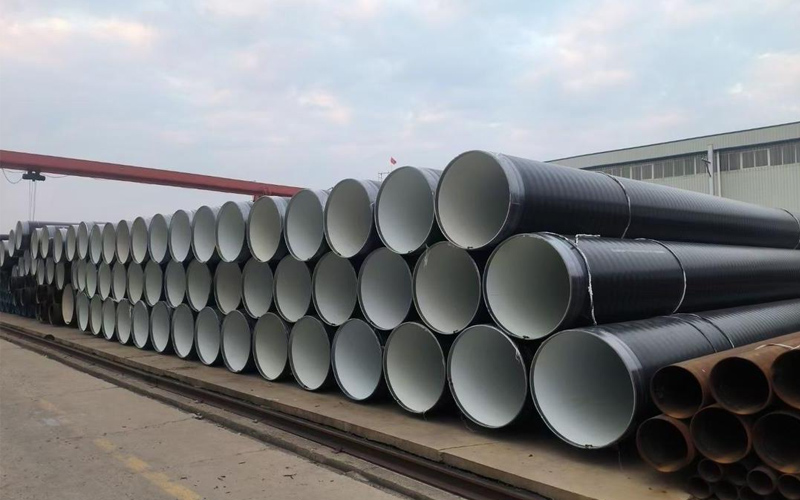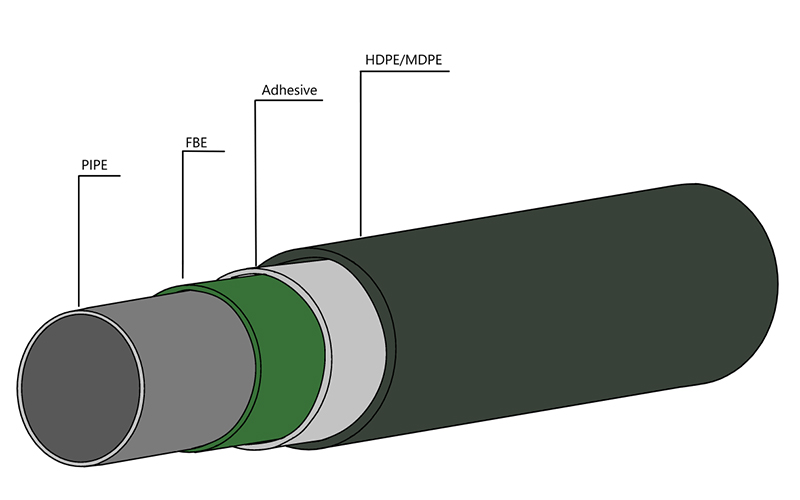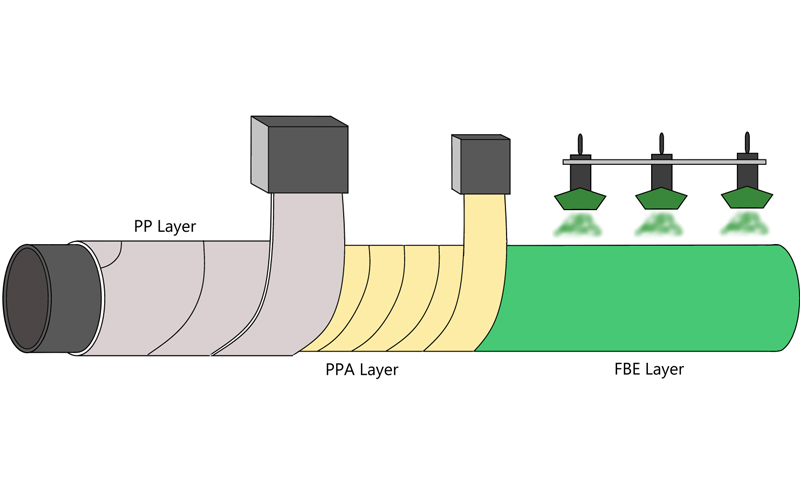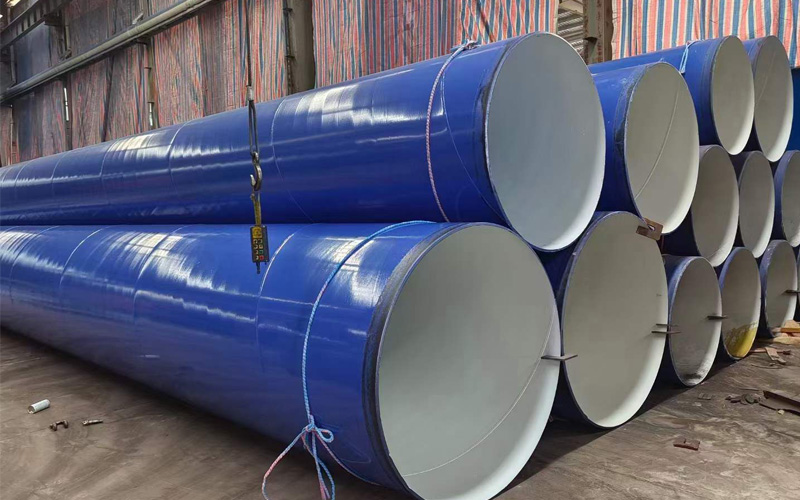Weld Seam Integrity: A Deep Dive into LSAW vs. SSAW Pipe
Introduction
Every industrial pipeline is a steel artery, meant to hold up under a thousand or more pounds of pressure for decades on end. And the single most important factor in determining any pipe’s long-term reliability is the weld seam. If the weld fails, the pipe fails. And in the world of large diameter line pipe, there are two main types of manufacturing processes: the lsaw steel pipe, and the ssaw steel pipe. There is a single, most basic difference between those two types: the angle and direction of the weld. It’s a simple variant with huge ramifications for their relative mechanical performance.
This article provides an engineer-level look at the fundamental differences between these two weld types, and how their manufacturing processes create different distributions of stress, potential defect types and failure risk, and also how modern quality control ensures the reliability of both. This is your authoritative guide to the most important technical differences you need to know to make the right choice for your own critical project.
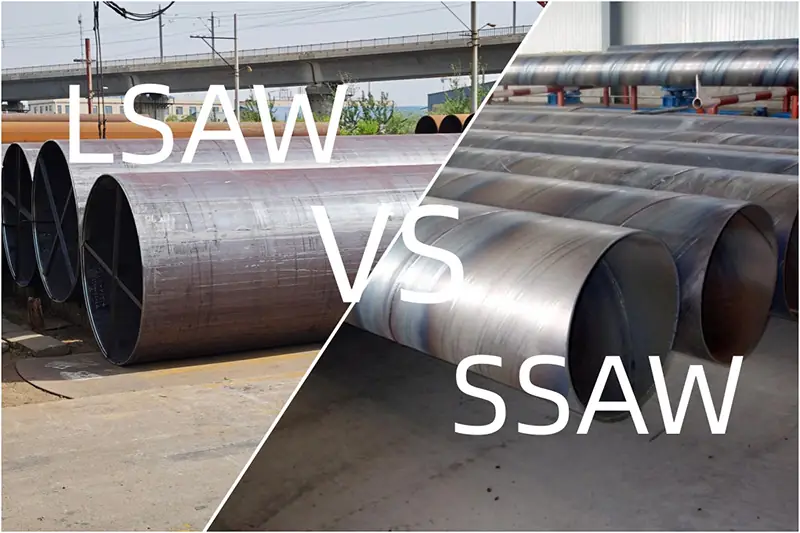
How Manufacturing Dictates Weld Seam Geometry
To know what a weld is, we must know where it comes from. The way it is made is what gives the weld its identity. It is also what determines a weld’s orientation in relation to the stresses the pipe will be subjected to.
The LSAW manufacturing process is a batch process. The process is straightforward and linear – it starts with a discrete plate of steel and ends with a pipe that is a cylinder of the same plate after a series of operations. In the most common method, the JCOE process, the edges of the flat steel plate are bent first inwards (“J-ing”), after which the plate is further formed into a “C” shape before it is finally closed into a tubular “O” shape in a powerful press. After tack welding, the seam is welded from the inside and outside simultaneously with the submerged arc welding (SAW) technique. A critical last step for high grade LSAW pipes is mechanical expansion where the pipe is sized to its final dimension by forcing it through a die, which is also helpful in relieving internal stress. The end result of this process is a single, straight weld seam that is parallel to the pipe’s longitudinal axis.
The SSAW manufacturing process is a continuous one, where a hot rolled coil of steel is unwound and fed into a set of rollers which bends the steel strip into a spiral or helical shape. When the edges of the spiral come together, they are welded from both the inside and outside continuously using the SAW method. The diameter of the pipe is determined by the width of the steel coil and the forming angle. The result is a long, helical or spiral weld seam on the pipe body. Straight and parallel to the pipe’s axis versus helical and at an angle relative to the pipe’s axis – this fundamental difference gives rise to their radically different mechanical behaviors under internal pressure.
The Core Difference: Stress Distribution Analysis
When a pipe is subjected to internal pressure (P), two primary stresses are generated in the pipe wall:
1. Hoop Stress (σh): This acts circumferentially and is the force trying to split the pipe open. It is the dominant stress and is calculated as σh=PD/2t (where D is diameter and t is thickness).
2. Axial Stress (σa): This acts along the length of the pipe and is half the magnitude of the hoop stress, calculated as σa=PD/4t.
The 2:1 relationship between hoop stress and axial stress is the most critical factor in pipeline design.
·. This design places extremely stringent demands on the quality, uniformity, and material properties of the weld, as any minute flaw can be magnified and become a point of failure under the direct force of the primary stress.
· Stress State of an SSAW Weld Seam: The helical seam of an SSAW pipe is much more favorably oriented. With a typical helix angle (α) between 40 and 75 degrees, the principal hoop stress is not applied perpendicularly to the weld. Instead, the stress is resolved into components, significantly reducing the normal stress acting directly on the seam. The stress on the weld is a function of both hoop and axial stresses, and because of the angle, it is always lower than the maximum hoop stress. This superior stress distribution allows the seam to avoid the peak principal stress, thereby reducing stress concentration and enhancing the pipe’s overall pressure-bearing capacity, especially in large-diameter applications.
Assessing Potential Defects and Failure Risks
Nowadays, factories make things very well and check them carefully. But each welding method in pipe making comes with its own risks, and those risks need to be handled differently.
When making LSAW pipes, the main risk comes from using bad steel, not from how the pipe is made. If the steel plate has flaws inside, like lines of weakness, those will show up in the welding part. Since the welding line is short and straight, workers can check it easily and find any problems. But if there is a bad flaw, it is more likely to break because it sits at 90 degrees to the main stress along the pipe’s length, sort of like when you break a stick of chalk.
With SSAW pipes, the biggest worry is keeping its shape as the pipe is made and welded all the time. Since LSAW pipes have the shortest weld, SSAW pipes, where the weld wraps around the pipe, have much longer welds. This could mean more chances for a mistake. However, it’s less likely to break because of the way it is made. The angle of the weld helps stop a crack from spreading. If a crack starts, instead of going straight down the pipe, it curls around, using more energy, which makes it less likely to break in a big, sudden way.
The Critical Role of Non-Destructive Testing (NDT)
To counter these risks, rigorous Non-Destructive Testing (NDT) is a mandatory and indispensable part of production for both LSAW and SSAW pipes, as stipulated by standards like API 5L.
· X-ray Inspection: Radiographic testing is used to provide a clear image of the internal structure of the weld, revealing volumetric defects such as porosity, slag inclusions, and lack of penetration.
· Ultrasonic Testing: UT is extremely sensitive to planar defects like cracks and lack of fusion, which are often more dangerous than volumetric defects. The entire weld seam of every pipe is typically scanned ultrasonically.
· Magnetic Particle Inspection (MPI): This method is used on the pipe ends and bevels to detect any surface-breaking cracks that could compromise field welding.
· Hydrostatic Testing: As the final proof test, every single pipe is filled with water and pressurized to a level far exceeding its operational rating. This test validates the overall strength and leak-tightness of the pipe body and the weld seam, providing the ultimate assurance of its integrity.
Conclusion
To sum up, this comparison between LSAW and SSAW is not simply to make conclusions which is better than the other one, but to figure out which one is preferable for a specific application. With a single and short weld seam which is easy to inspect and subjected to direct stress, LSAW pipes could definitely be a solid choice for some high-pressure high-thickness application. With a helical weld seam, SSAW pipes are naturally superior in crack-arrest and stress distribution, making them a reliable and economic solution especially for large-diameter pipelines (water/gas transmission).
But finally, integrity relies on the manufacturer. A manufacturer who strictly complies to international standards (like API 5L), invests deeply into manufacturing/NDT technology, and persists in quality management system could provide a safe and reliable pipe whatever the weld orientation is. Being a professional pipe supplier, allland steel pipe could provide high-quality LSAW/SSAW products, expert guidance to help you choose the most valuable and suitable solution according to your specific technical/commercial requirements for the project.
Get Your Custom Steel Pipe Quote Today!
Provide us with your project details (like application, specifications, quantity). Our experienced team will respond with a tailored solution and competitive quote within 24 business hours.
Related Articles
ASTM A53 vs. API 5L: A Guide to Selection and Application
Introduction:Technology differences determine success or failure, and selection needs to be “precise”
Steel Density Analysis: Core Differences between Mild and Medium Carbon Steels and Industrial Applications
3LPE coated steel pipe: a solid barrier in the field of industrial corrosion protection
3LPP coated pipe: anti-corrosion guard in high temperature and high pressure environment
FBE steel pipe: the technological armor of the steel defense line
HOT TAGS
latest posts
- 3LPE coated steel pipe: a solid barrier in the field of industrial corrosion protection
- Breakthrough of spiral welded pipe technology: How does SSAW steel pipe conquer the water supply project in rugged mountain areas of South America?
- What is offshore pipeline and its Applications in offshore oil and gas development
- 3PP Coating for High-Temp Pipe Corrosion | Case Study
- A Guide to ISO 21809: 3LPE & FBE Pipe Coating Standards




